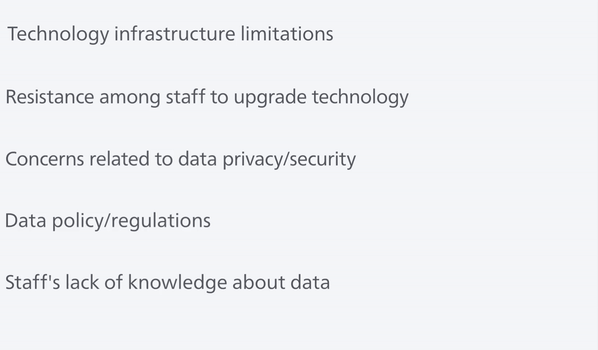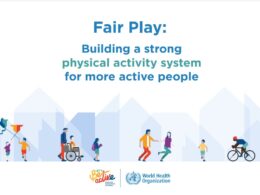Priorities shift as healthcare leaders navigate a changed world
Philips
June, 2022
The Future Health Index is commissioned by Philips
Edited by
Joaquim Cardoso MSc.
Health Transformation . Institute
Research Institute for Continuous Health Transformation
June 13, 2022
The Future Health Index 2022 is the largest global survey, analyzing the top priorities and concerns of almost 3,000 healthcare leaders in 15 countries
The Future Health Index 2022 report examines the experiences of almost 3,000 healthcare leaders and their expectations for the future.
The research for the Future Health Index 2022 report was conducted in 15 countries (Australia, Brazil, China, France, Germany, India, Indonesia, Italy, the Netherlands, Poland, Russia, Saudi Arabia, Singapore, South Africa, and the United States).
The study combines a quantitative survey and qualitative interviews conducted from December 2021 — March 2022.
Emerging from the pandemic, healthcare leaders identify three key challenges for 2022 and beyond
The 2022 report paints a picture of a sector that is radically re-evaluating priorities as it strives to deliver improved patient care.
- Tackling the human capital crisis is top of the agenda for healthcare leaders
- Healthcare leaders face persistent challenges unlocking the power of data
- Healthcare leaders recognize the potential of predictive analytics, but there are roadblocks to progress
Staff satisfaction and retention
1.Tackling the human capital crisis is top of the agenda for healthcare leaders
Apart from delivering high quality care and ensuring the financial health of their hospital/healthcare facility, staff satisfaction and retention rank as the highest concern for healthcare leaders, both today and three years from now.
Top priorities for healthcare leaders:

Healthcare data
2.Healthcare leaders face persistent challenges unlocking the power of data
Many leaders cite concerns around siloed data, limited technology infrastructure, data illiteracy and data security concerns, leading to frustration with the lack of progress embedding data through care pathways.
Barriers to effective data use*

*Respondents surveyed selected up to three top barriers to effective data use
Predictive analytics
3.Healthcare leaders recognize the potential of predictive analytics, but there are roadblocks to progress
While healthcare leaders have high levels of confidence in predictive analytics, data security is key to further building trust, ultimately increasing use of this technology.
Increased data security would enhance trust in predictive analytics in both clinical and operational settings*

*Percentage of respondents who cite increased data security/privacy as the top way to increase trust in predictive analytics
Healthcare leaders worldwide are embarking on a reboot as they navigate the demands of a fundamentally changed world.
– Jan Kimpen, Chief Medical Officer at Philips
Originally published at https://www.philips.com.

Conclusions (excerpt from the report)
The Future Health Index 2022 paints a picture of a sector that has seen dramatic transformation in recent years, which has accelerated rapidly over the past 12 months.
Rather than continuing to focus solely on the pandemic, we see today’s healthcare leaders radically shifting their priorities to meet new realities in medical management.
Specifically, leaders have indicated three key priorities for 2022 and beyond:
Improving the staff experience
With the sector facing a significant 15 million labor shortfall by 2030, improving the staff experience has become a top priority for today’s leaders.
This year’s report has shown that leaders believe increased training in digital health technologies will be key to progress, helping staff feel less overwhelmed by data-centric processes and more ready to embrace new workflows.
However, increased training is just one piece of the puzzle — fixing the labor crisis in the long term will ultimately depend on the successful coordination of governments, regulators and the industry as a whole to improve working conditions across the board.
With the sector facing a significant 15 million labor shortfall by 2030, improving the staff experience has become a top priority for today’s leaders.
Bridging the gap between the promise of predictive analytics and current usage
From data silos and interoperability concerns to technology infrastructure limitations, many factors are to blame for the uneven uptake of predictive analytics to date.
The good news is, we’re now seeing a number of leaders pioneering this technology and inspiring others to drive adoption in their own facilities.
As more organizations reap the rewards of machine generated insights in both clinical and operational settings, such as enhanced decision-making and lowered administrative burdens, we expect to see increased demand for peer-to-peer mentorships between early and late adopters, as well as strategic partnerships with health technology companies, bringing the whole sector up to speed
From data silos and interoperability concerns to technology infrastructure limitations, many factors are to blame for the uneven uptake of predictive analytics to date.
Addressing threats to healthcare data security
With the industry experiencing record surges in data breaches, one in five leaders now cite data privacy and security as top concerns.
This year’s report has shown how effective initiatives like the European Health Data Space can be in addressing such concerns.
However, the future of healthcare data security will depend as much on educational initiatives for leaders as it will on vendors following security-by-design principles — infusing security from product design and development through testing and deployment, with robust policies and procedures for monitoring, updates and incident response management, as has long been standard practice in other industries like financial service
All things considered, our sector has taken stock and reprioritized in the wake of another year of transformations, and against a growing backdrop of complex challenges that will endure far beyond the pandemic, from staff shortages and security threats to the rapid rise of chronic diseases.
Ultimately, we see healthcare leaders embarking on a reset to meet the demands of a fundamentally changed world – a world they hope to shape and improve with the help of data and predictive analytics
With the industry experiencing record surges in data breaches, one in five leaders now cite data privacy and security as top concerns.

Foreword
Over the past two years, pressure on the healthcare industry has been unrelenting.
The pandemic has continued to challenge resources, systems and the provision of care at every turn and in every country around the world.
Today, as we emerge from the pandemic, we see healthcare leaders embarking on a reset — refocusing on a number of new and existing priorities, from addressing staff shortages, to extending care delivery, to leveraging big data and predictive analytics, as they navigate new realities in medical management.
The Future Health Index 2022 report provides a detailed picture of the most pressing priorities for today’s healthcare leaders — and reveals what they plan to do about them.
- Top of the list are staff satisfaction and retention, which have become increasingly difficult to maintain in a sector facing widescale labor shortages.
- Next is the drive to extend care delivery beyond hospital walls, which has been accelerated by the pandemic, and continues to fuel investments in digital health technologies and capabilities.
- Meanwhile, as we highlighted in last year’s report, a sharp focus on social responsibility has had a positive effect in promoting greener healthcare systems.
However, for some, the change has not been fast enough, with our latest research revealing that many leaders are now accelerating their sustainability plans, in line with the evolving expectations of patients.
- Finally, unlocking the power of big data and predictive analytics has presented some of the most significant opportunities for healthcare leaders to improve the quality, cost and speed of care.
But the pace of development is slow, and leaders recognize the need to strengthen their investments with strong strategic partnerships, staff training and governance in order to maximize their returns.
In summary, this 2022 report reflects a resetting of priorities and of care delivery itself, as healthcare leaders navigate a fundamentally changed world.
“As we emerge from the pandemic, we see healthcare leaders embarking on a reset.”
Jan Kimpen
Philips Chief Medical Officer
“As we emerge from the pandemic, we see healthcare leaders embarking on a reset.” — Jan Kimpen
Names mentioned
Jan Kimpen












